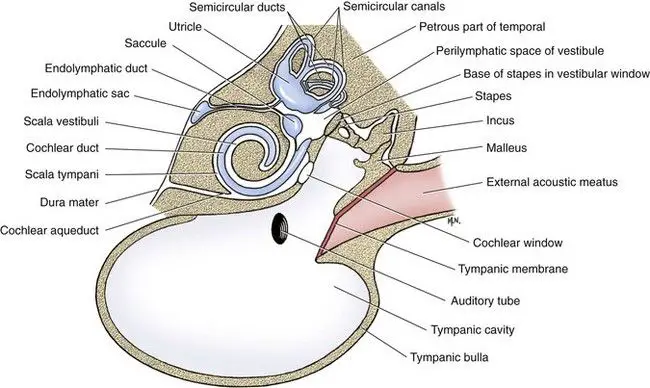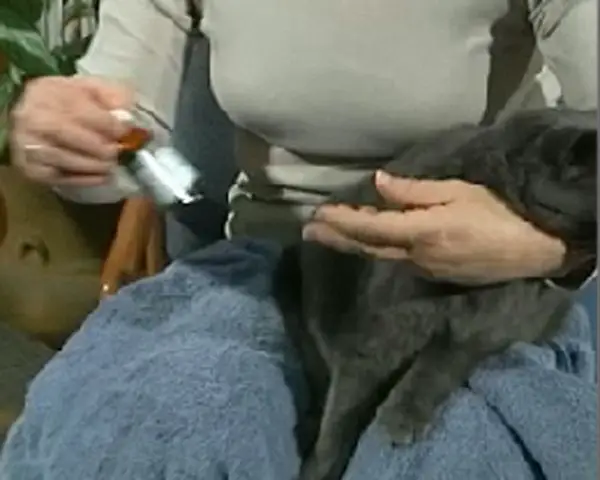Introduction
Ear problems are common in cats, with ear mites, infections, and allergies being some of the most frequent causes. Cat parents naturally want to provide relief when their feline friend seems bothered by irritated ears. This often leads to questions about using dog ear medications on cats since those products are readily available.
While it may be tempting to use what’s on hand, there are important reasons to avoid using dog ear drops in cats. Cat ears have unique structures and requirements for care. Using the wrong ear medications can lead to further irritation or even damage.
This guide will examine the key differences between dog and cat ears, explain the risks of using dog ear drops on cats, and provide safer alternative approaches for treating cat ear issues at home.
Causes of Ear Problems in Cats
Ear problems in cats often point to an underlying issue. Here are some common causes of ear problems in felines:
Ear Mites
Ear mites are tiny parasites that live in the ear canal and feed on ear wax and oils. They are highly contagious between cats and can cause severe itchiness, redness, and inflammation. Ear mites are one of the most frequent causes of ear issues in cats.
Ear Infections
Bacterial and fungal infections are also common causes of ear problems in cats. Moisture, debris, and buildup in the ears create the perfect environment for infection to develop. Infections cause pain, discharge, odor, and scratching at the ears.
Allergies
Allergies to foods, medications, pollen, or other environmental triggers can manifest as itchy ears and skin in cats. The scratching and head shaking can then lead to further irritation and secondary ear infections.
Dog Ear Medications
There are several types of dog ear drops that are commonly used for canine ear issues:
- Antibiotic ear drops – These contain antibiotics to treat bacterial infections. Common antibiotics found in dog ear drops include gentamicin, neomycin, polymyxin B, and miconazole.
- Antifungal ear drops – Used to treat fungal ear infections. Common antifungal ingredients include nystatin and miconazole.
- Corticosteroid ear drops – Help reduce inflammation and itchiness. Examples are hydrocortisone and prednisolone.
- Ceruminolytic ear drops – Break down ear wax buildup. Commonly contain carbamide peroxide.
- Anesthetic ear drops – Relieve pain and itch. Benzocaine is a typical anesthetic ingredient.
Other common ingredients in dog ear medications include salicylic acid to break down debris, sulfur to treat mites, and antiseptics like chlorhexidine to prevent infection.
Differences Between Dog and Cat Ears
There are some key anatomical differences between dogs’ and cats’ ears that make it risky to use dog ear medications on cats.
One major difference is in the shape and structure of the ear canal. Dog ear canals are long and tend to have a vertical, L-shaped bend, while cat ear canals are short and straight. The dog’s vertical ear canal traps more debris, wax, and moisture. Cat ear canals are more open and air flows through more freely, allowing them to stay cleaner and drier.

The pH balance also differs between species. Dogs have a more neutral pH in their ears while cats have an acidic pH environment. The acidic pH in cats helps prevent bacterial and fungal overgrowth. Using a dog ear wash or drops formulated for a neutral pH could disrupt the cat’s protective acidic environment.
Additionally, dogs have a higher concentration of ear wax and tend to rely more on people helping to keep their ears clean. Cat ears are somewhat self-cleaning due to the shape and pH. As a result, cats usually need much less intervention for ear cleaning compared to dogs.
Due to these anatomical and physiological differences, ear treatments designed for dogs may not be well-suited for cats. The wrong pH or ingredients could lead to irritation, infection, or other problems in feline ears. It’s important to use products formulated specifically for cats whenever possible.
Risks of Using Dog Ear Drops on Cats
Using dog ear medications on cats can be very risky and is not recommended by veterinarians. Here are some of the potential dangers:
Ingredient Toxicity
The active ingredients in dog ear drops are formulated specifically for canine physiology and biochemistry. Ingredients like antibiotics, antifungals, steroids, and cleaning agents can be toxic for cats if used incorrectly or in the wrong dosage. For example, dogs can typically handle stronger concentrations of antibiotics and antifungals than cats.
Overdose
It’s easy to accidentally overdose a cat with dog ear medication. The dosage instructions on dog products are tailored for the average canine weight and ear canal size, both of which are larger than the average cat’s. Giving too large a dose of dog ear drops to a cat can cause poisoning.
Masking Underlying Issues
Using dog ear treatments without consulting a vet may temporarily relieve symptoms in a cat’s ears without addressing the root cause. For example, dog drops may reduce inflammation and irritation caused by an untreated infection. This can mask a serious issue that requires different medication and treatment.
Safety Precautions
While in rare cases dog ear drops may safely be used on cats, pet owners should always speak to a veterinarian first before trying this. A vet can assess your cat’s unique health condition and determine if dog ear drops would be harmful or helpful. They may recommend a different cat-safe medication or home remedy instead.
If a vet does approve using dog drops as a temporary solution before getting cat-specific medication, owners should monitor their cat closely for any negative reactions.
Signs of an allergic reaction or irritation include:
- Excessive scratching at ears
- Head shaking
- Redness or swelling
- Discharge or bleeding
- Loss of balance
- Appetite changes
If any concerning symptoms appear after applying dog ear drops to a cat, stop using the medication and call a vet right away. Seek emergency care if severe signs like facial swelling or difficulty breathing occur.
With a vet’s guidance, dog ear drops can potentially provide temporary relief. But cat ear medications are still the safer, more effective long-term solution for felines.

Home Remedies for Cat Ear Issues
Before using any home remedy, it’s important to identify the cause of your cat’s ear problem. Once the underlying issue is determined, there are some natural substances that may help provide relief and combat minor ear infections in cats.
Olive Oil
Olive oil can help smother ear mites by suffocating adult mites and their eggs. To use: Mix a few drops of olive oil with an equal amount of warm water. Using a dropper, apply 4-6 drops into your cat’s ear canal. Gently massage the base of the ear to help work the oil deep into the canal. Allow your cat to shake their head to remove any excess. Apply daily for 1-2 weeks to kill off all stages of ear mites.
Vinegar
The acidic nature of vinegar makes it an effective cleaning solution for dirty cat ears prone to waxy buildup. A 50/50 mixture of white vinegar and water can help dissolve ear wax and debris. Dip a clean cotton ball in the solution and gently wipe out visible dirt and wax from the ears. Do not use vinegar if your cat has open wounds in their ears.
Garlic Juice
Garlic contains anti-inflammatory and antimicrobial compounds that may help fight minor ear infections. Crush a garlic clove to extract the juice. Mix a few drops with an equal amount of olive oil. Use a dropper to put 2-3 drops in your cat’s ears 1-2 times per day. Only proceed if your cat will tolerate this. Discontinue use if irritation occurs.
Over-the-Counter Cat Ear Medications
There are several over-the-counter ear medications formulated specifically for cats that can be purchased online or at local pet stores and pharmacies. Some popular OTC cat ear drop brands include:
-
Virbac Epi-Otic Advanced – Contains antifungal, antibacterial, and anti-inflammatory ingredients. Good for treating mild infections.
-
Zoetis Terramycin – Contains oxytetracycline antibiotic. Helps fight bacterial and fungal infections.
-
Dechra MalAcetic – Features acetic and boric acid to treat bacterial and fungal infections.
-
PetMD Cat Ear Cleaner – Isopropyl alcohol helps dry excess ear wax and debris.
The main active ingredients in OTC cat ear medications are antibiotics, antifungals, steroids, and drying agents. These help fight infections while controlling inflammation and reducing fluids and wax buildup.
Always check with your veterinarian before using any new ear drops on your cat. Follow label instructions carefully for proper dosage and administration. Monitor your cat’s ears closely when treating at home. See a vet if symptoms persist or worsen.
When to See a Veterinarian

Most minor ear irritations in cats will clear up on their own, but it’s important to monitor your cat’s ears closely and seek veterinary care if certain symptoms persist or worsen. You should schedule an appointment with your vet right away if your cat has:
- Severe swelling, redness, or pain in the ear
- Discharge that’s yellow, green, or foul-smelling
- Head shaking, scratching, or rubbing that won’t stop
- Loss of balance, walking in circles
- Crusting or scabbing around the inside of the ear
- Hair loss around the ear
- Bleeding or discharge from the ear canal
- Bad odor coming from inside the ear
- Sudden hearing loss or disorientation
These can all indicate a potentially serious issue like an infection, polyp, mite infestation or even a foreign object lodged deep in the ear canal. Leaving these untreated can lead to permanent damage, so it’s critical to have your vet examine your cat right away if any of these symptoms are present.
Conclusion
Ear problems are common in cats, but you should avoid using dog ear medications as treatment. Cat ears have different structures and sensitivities. Dog ear drops can contain ingredients that are unsafe or ineffective for cats, leading to irritation, allergic reactions, or no improvement in symptoms.

The best approach is using remedies formulated specifically for cats. Many over-the-counter cat ear cleaners and medications are available. Home remedies like diluted vinegar can also provide relief for minor issues. However, chronic or severe symptoms may require prescription medications and veterinary care.
Properly treating ear problems in cats provides comfort, prevents complications like infections, and maintains good ear health. Consult your veterinarian if your cat is showing signs of persistent ear troubles. With the right treatment, your feline companion can get back to feeling their best.